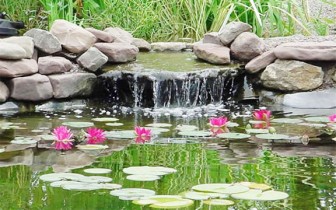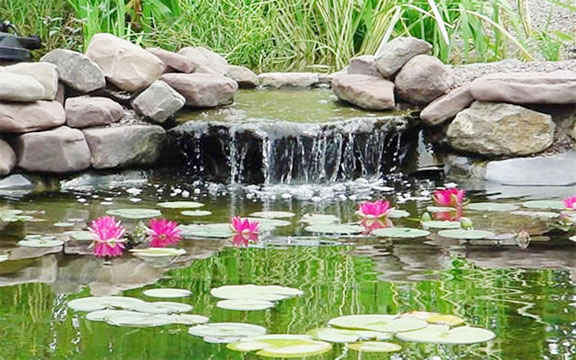In Guyana, or at least in Georgetown, I don’t suppose that many gardeners feel any urgent need to have a water feature in the garden, because for a disproportionate amount of time you have an excess of it! However you will find that there are formal or informal water features in every really good garden, and if you have the space and a garden that is normally well drained it is well worth considering. Water which is still or rippling gently, gives peace and tranquility.
Pools must be in good light (to avoid the growth of algae) with a light fringe of trees, and should be sited where the ground is level.


Ponds shallower than eighteen inches (18”) will just heat up too much, especially in Guyana.
The base and sides must be clear of stones which could perforate the liner, and hey presto, you have an empty pool/pond. All it needs is a liner, water and plants.
Lining the pool: You can use ordinary plastic which I would not recommend as it tears very easily. My preference (and recommendation) is for a (rubber) butyl liner which is much thicker, and relatively easy to use. It will last about thirty years. In either case you should cover the base of the pool with sand.
The liner should be as long as the pool, plus twice the depth plus two feet, and as wide as the pool plus twice the depth plus two feet The extra two feet is for tucking in. Be over-generous because you don’t want to be short when you come to the end of the job. Make sure it fits snugly into the hole and fits the shelf area. As a precaution use soft shoes when you’re walking inside. Lay the liner so that it comes over the top, and as I’ve said, see that it fits into the hole comfortably. Weight the overlap with slabs of stone and very slowly start filling the pool. If you think there is any excess liner overlap, carefully cut it off with scissors.
Edging the pool: Being a lad from the Lancashire/Yorkshire area of England I have a strong preference for natural stone, and stone slabs are my choice as edging material. These should overhang the pond by about two inches. The turf which you cut out at the beginning of the job will do very nicely if you don’t use stone. Remember you already cut them into pieces three foot long and one foot wide. Use this instead of stone still allowing an overhang of turf to soften the look. One thing to think about. Don’t cover more than a third of the surface with plants/leaves. Stay well and may your God guide your hands.






